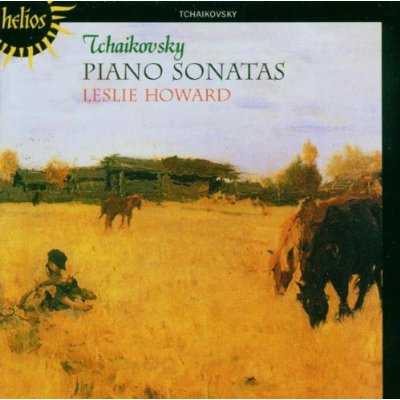
Performer: Leslie Howard
Composer: Pyotr Il’yich Tchaikovsky
Audio CD
SPARS Code: DDD
Number of Discs: 1
Format: APE (image+cue)
Label: Hyperion
Size: 195 MB
Recovery: +3%
Scan: yes
01. Allegro
02. Allegro Con Fuoco
03. Andante
04. Scherzo: Allegro Vivo
05. Allegro Vivo
06. Moderato E Risoluto
07. Andante Non Troppo Quasi Moderato
08. Scherzo: Allegro Giocoso
09. Finale: Allegro Vivace
Howard’s Realization of Tchaikovsky’s Piano Sonatas including the Unfinished “First”
Tchaikovsky’s solo piano output is admittedly not his forte. Much of it is confined to the salon and only a few substantial pieces emerge, such as The Seasons, Dumka, and Romance. Consequently, most music writers and listeners dismiss the entirety of his solo piano output with much criticism. Some of his piano pieces are banal, but the piano sonatas are of a different and higher-quality stock, often well-constructed, bursting with melody, and generally engrossing. The present Helios release is an extremely valuable addition to the Tchaikovsky discography. Few listeners either know or appreciate Tchaikovsky’s piano sonatas, but fewer have heard his unfinished Piano Sonata No. 1 in F minor (first movement) which is fleshed out and given its world-premiere recording here by the prolific Leslie Howard.
Superficially, Tchaikovsky’s two published piano sonatas sound generically Romantic, as if produced from the mold of Schumann, Chopin, and Liszt. The Piano Sonata in C-sharp minor (1865) was written during Tchaikovsky’s last year at the St. Petersburg Conservatory and is quite derivative, but still a font of attractive ideas. The second “Andante” movement is dreamy and fragile in the manner of Schumann, and floats in a realm of soft pianissimo, which Howard conveys artfully. Strangely, the opening motive of the “Scherzo” movement sounds exactly like the beginning of the “Spring” “Largo” movement from Vivaldi’s Four Seasons. I believe the greatest moment of this piano sonata is the last movement, an impassioned virtuosic powerhouse à la furious Chopin.
Tchaikovsky’s Piano Sonata in G major Op. 37 (1879) is occasionally recorded and performed, but Howard’s rendition is far superior to most, including even Richter’s version. The first movement is significant for its length (11 minutes) and unconventional use of the “Dies Irae” in the thematic material. Unlike some of his contemporaries and later composers, Tchaikovsky’s “Dies Irae” motive is used to generate a cheery and not austere melody. In the next movement, a melancholy “Andante”, Tchaikovsky borrows from Chopin; the opening theme is reminiscent of Chopin’s Prelude No. 4 in E minor. The “Finale” of this sonata, a real perpetuum mobile movement, glimmers with inspiration and Romantic spirit. One of the alternating sections in this Rondo is particularly memorable for its passionate proclamations and drama. Other virtuosic phrases and cadential extensions sound so incredibly like Alkan that I wonder if Tchaikovsky had examined this French composer’s piano music.
Last but decidedly not least is Howard’s realization of the unfinished “Piano Sonata No. 1 in F minor”, which is actually my favorite piece from this disc. I obviously don’t have the unfinished score to make an evaluation on just how much Tchaikovsky is here and how much was filled in. Rather than speculating, I’ll rely on Howard’s explanation: “Tchaikovsky’s manuscript consists of 172 bars of music: a sonata exposition without introduction, and with a first-time bar leading to its repetition. The present completion involved constructing a short return to the principal theme, the reworking of the transition and some slight varying of the second subject, and the writing of a short coda from a cancelled transition passage in the manuscript, with a nod to the coda of another early Tchaikovsky piece, the Scherzo à la russe, Op 1 No. 1. The aim throughout was, of course, to add as little new material as possible. The completed sonata movement, which runs to 338 bars of music lasting about ten minutes in performance, makes available to the public the work of a confident young Tchaikovsky…” Indeed, it’s hard to believe that this fiery allegro akin to Schubert’s Wanderer Fantasy was written by the budding Tchaikovsky.
Bottom line: Tchaikovsky’s piano sonatas won’t dethrone Brahms’s or Chopin’s, but certainly deserve to be showcased along side Schumann’s or Grieg’s. Tchaikovsky’s piano sonatas are unabashedly derivative, but his gift for melody and exciting narrative is pervasive throughout each, including the unfinished Piano Sonata No. 1, which is exceptional thanks to Howard’s craftsmanship and impressive performance.
thank you very much, indeed!